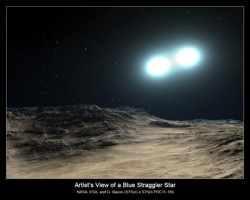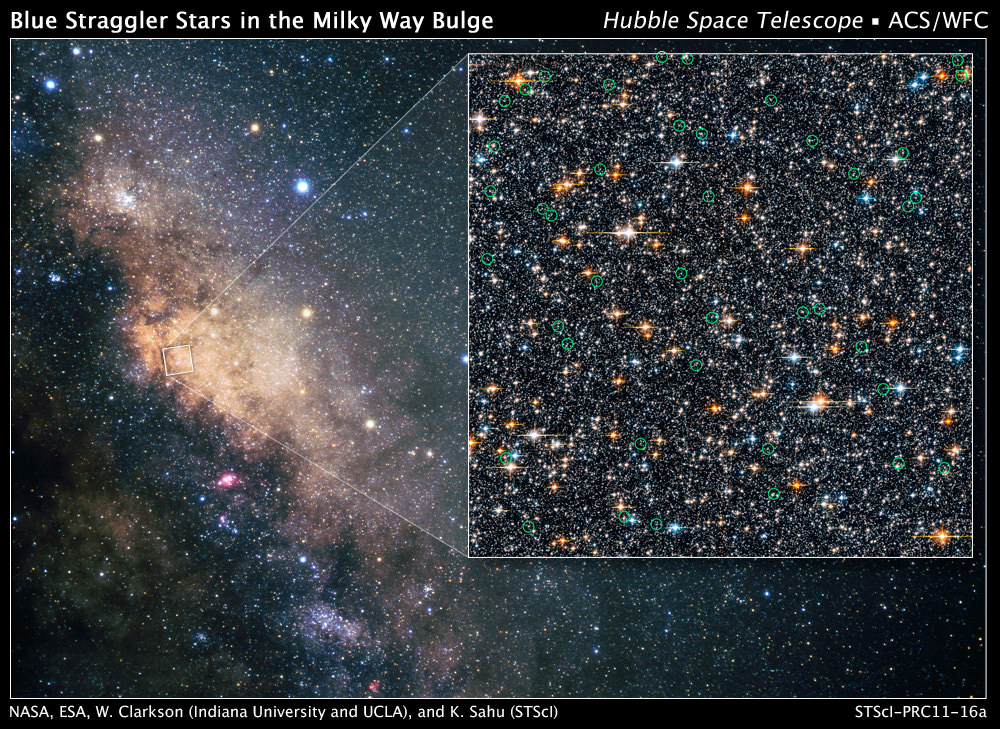Astronomers using the Hubble Space Telescope to peer deep into the central bulge of our galaxy have found a population of rare and unusual stars. Dubbed “blue stragglers”, these stars seem to defy the aging process, appearing to be much younger than they should be considering where they are located. Previously known to exist within ancient globular clusters, blue stragglers have never been seen inside our galaxy’s core – until now.
The stars were discovered following a seven-day survey in 2006 called SWEEPS – the Sagittarius Window Eclipsing Extrasolar Planet Search – that used Hubble to search a section of the central portion of our Milky Way galaxy, looking for the presence of Jupiter-sized planets transiting their host stars. During the search, which examined 180,000 stars, Hubble spotted 42 blue stragglers.
Of the 42 it’s estimated that 18 to 37 of them are genuine.
What makes blue stragglers such an unusual find? For one thing, stars in the galactic hub should appear much older and cooler… aging Sun-like stars and old red dwarfs. Scientists believe that the central bulge of the Milky Way stopped making new stars billions of years ago. So what’s with these hot, blue, youthful-looking “oddballs”? The answer may lie in their formation.

A blue straggler may start out as a smaller member of a binary pair of stars. Over time the larger star ages and gets even bigger, feeding material onto the smaller one. This fuels fusion in the smaller star which then grows hotter, making it shine brighter and bluer – thus appearing similar to a young star.
However they were formed, just finding the blue stragglers was no simple task. The stars’ orbits around the galactic core had to be determined through a confusing mix of foreground stars within a very small observation area. The region of the sky Hubble studied was no larger than the width of a fingernail held at arm’s length! Still, within that small area Hubble could see over 250,000 stars. Incredible.
“Only the superb image quality and stability of Hubble allowed us to make this measurement in such a crowded field.”
– Lead author Will Clarkson, Indiana University in Bloomington and the University of California in Los Angeles
The discovery of these rare stars will help astronomers better understand star formation in the Milky Way’s hub and thus the evolution of our galaxy as a whole.
Read more on the Hubble News Center.
Image credit: NASA, ESA, W. Clarkson (Indiana University and UCLA), and K. Sahu (STScI)


In other words: Hubble Gotchu!
Is it at all possible that these are left over stars from a very small young galaxy swallowed up by the Milky Way?
It’s also quite possible that star formation in the galactic bulge has not entirely stopped. And 42 out of 180,000 stars is not a particularly large proportion.